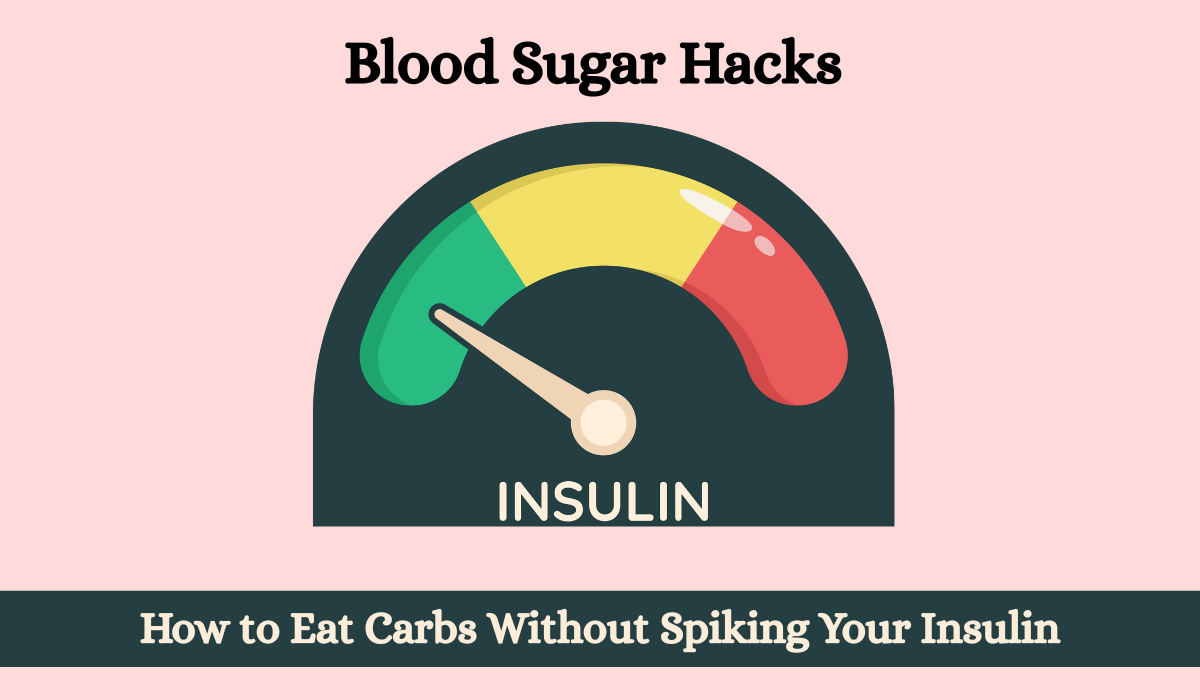Carbohydrates are not the enemy—but how and when you eat them can make all the difference. If you’ve ever felt bloated, sleepy, or hungry again shortly after eating a carb-rich meal, you may have experienced an insulin spike.
In this post, we’ll cover what insulin spikes are, why they matter, and how to eat carbs in a way that keeps your energy stable and metabolism healthy.
What is an Insulin Spike—and Why Should You Care?
When you eat carbs, your body breaks them down into glucose. This glucose enters your bloodstream, prompting your pancreas to release insulin, a hormone that helps your cells absorb the sugar.
When you eat fast-digesting carbs (like white rice, bread, or sugar) without balancing them with fiber, fat, or protein, insulin surges quickly to bring blood sugar levels down. These spikes, when repeated often, may lead to:
-
Fatigue and energy crashes
-
Food cravings and hunger soon after eating
-
Increased fat storage and weight gain
-
Insulin resistance, which is a risk factor for type 2 diabetes, PCOS, and other hormonal imbalances
The goal isn’t to avoid carbs altogether—it’s to eat them smarter.
1. Eat Carbs Last in Your Meal
Meal sequencing plays a key role in controlling insulin response. Eating fiber, protein, and fat before carbs can significantly reduce the spike in insulin that follows a meal.
Practical examples:
-
Indian meal: Start with a raw vegetable salad, then have dal or paneer, and finish with roti or rice.
-
Western meal: Begin with greens tossed in olive oil, move to grilled chicken or legumes, and finish with sweet potato or pasta.
-
Snack example: Eat a boiled egg or a handful of almonds before fruit.
2. Use Apple Cider Vinegar or Lemon Before Meals
A small amount of vinegar or lemon juice before a meal can lower post-meal insulin response by 20 to 30 percent.
How to use it:
-
Mix 1 teaspoon of apple cider vinegar or fresh lemon juice in a glass of water and drink it 10 minutes before meals.
-
Or use lemon/vinegar in salad dressings, dips, or squeeze it over your cooked food.
Avoid if you have acid reflux, ulcers, or related conditions.
3. Move After Eating
A short 10 to 20-minute walk after meals helps your muscles absorb glucose, easing the demand on insulin.
Alternatives to walking:
-
Gentle yoga or stretching
-
Light chores around the house (like folding clothes or tidying up)
Movement after meals supports digestion and helps flatten the insulin curve.
4. Prioritize Sleep and Manage Stress
Sleep deprivation and high stress increase cortisol levels, which can reduce insulin sensitivity.
Tips:
-
Aim for at least 7 to 8 hours of restful sleep
-
Avoid screens at least 1 hour before bedtime
-
Practice breathing exercises, mindfulness, or nature walks daily
-
Consider adaptogenic herbs like ashwagandha if appropriate
5. Choose Fiber-Rich and Resistant Starch Carbs
These carbs are digested more slowly and don’t trigger sharp insulin spikes.
Smart choices:
-
Whole grains: brown rice, barley, millets (bajra, jowar)
-
Legumes: lentils, kidney beans, chickpeas
-
Vegetables: sweet potatoes, carrots, leafy greens
-
Resistant starch: cooked and cooled rice, potatoes, or pasta
6. Always Pair Carbs with Protein or Fat
Never eat carbs alone. Pairing them with protein or healthy fats lowers their glycemic impact.
Meal combinations:
-
Roti with paneer and vegetables
-
Brown rice with dal, ghee, and sautéed vegetables
-
Fruit with nut butter or a few walnuts
-
Whole grain toast with egg or hummus
-
Oats with yogurt, chia seeds, and seeds or nuts
Mistakes That Often Cause Insulin Spikes
Avoid these habits:
-
Skipping breakfast or only eating fruit
-
Drinking fruit juice, soda, or sweetened beverages
-
Eating highly processed “low-fat” foods that contain hidden sugars
-
Consuming only carbs as a snack (like biscuits or crackers)
Final Thoughts
You don’t need to cut carbs from your life—you need to balance them. These small yet powerful changes in how you eat can support insulin regulation, boost energy, and prevent long-term health issues.
Would you like a downloadable insulin-friendly meal planner or carb-smart shopping list? Get in touch or subscribe to our wellness updates for practical tools to guide your health journey.



